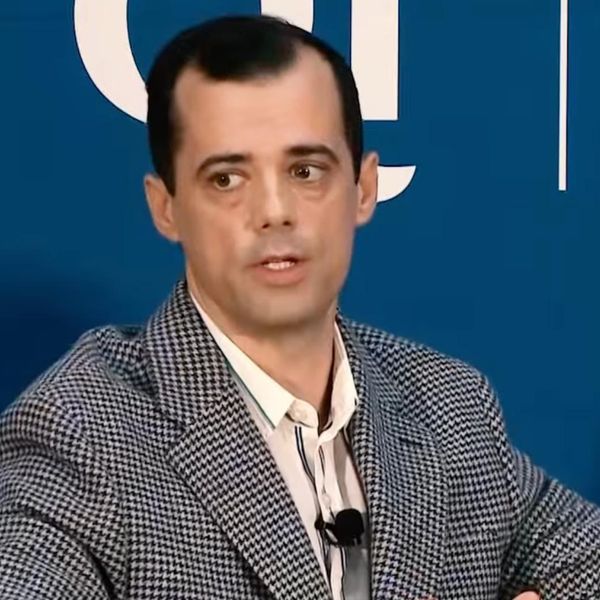Who killed Davey Moore?
Through each chorus of call and response, the characters in Bob Dylan’s folk ballad by the same name — the referee, the boxing promoter, the spectator, and even the opponent that struck Moore down — provide the nameless inquisitor with a reason they weren’t responsible for a tragedy in which they all played a role. The lesson, of course, is that it’s always easiest to look toward the most obvious and directly culpable source to explain the endurance of a scourge, but most systemic and pervasive problems usually require the complicity of the unwitting and even those trying to do good.
So who is responsible for the duration of America’s forever wars?
In his recent brief for the Quincy Institute, non-resident fellow Samuel Moyn directs the spotlight in a counterintuitive, and discomfiting, direction — toward the members of civil society that advocate for limiting civilian suffering in war. By focusing on the way war is fought, he argues, organizations like mine (Center for Civilians in Conflict, or CIVIC) and advocates like me have displaced more important arguments, or even shifted the debate entirely, away from whether or not war should continue or if new wars should be fought in the first place.
Moyn argues that wars, including America’s “forever wars,” continue because civil society has focused on making them more humane. In this, Moyn casts these elements of civil society into the purgatory of moral gradualism; the equivalent of those who sought more humane forms of slavery or who seek more ethical treatment of animals in slaughterhouses, or more recently, those who seek police “reform” as opposed to those who call for its abolition.
Invited by Responsible Statecraft to respond, my first instinct, perhaps like the referee in “Who Killed Davey Moore,”was to provide a defense of the work organizations like mine do to limit harm to civilians in war; and a defense is certainly available. Our organization centers its mission on protecting civilians from harm in armed conflicts being fought now. The work is not a means to, and cannot await, some other maximal end; we are not strategizing on how best to use the fact of civilian death to achieve policy goals other than immediate relief for those who are currently suffering and those who might in the near future if no action is taken. It is not a junction along a longer, gradual pathway to abolition — it is an absolute claim for the rights and dignity of all civilians, who demand and deserve protection from war now and at all times.
This belief — that civilians should not be harmed in war — lives in harmony with the necessary recognition that war always harms civilians. As a result, I believe our work can, and does, sit comfortably alongside the work of those who strive to prevent and end war, and is consistent with the anti-war tradition which has always allowed for both relief to the wounded and pacifist activism (see, for example, the case of the activist Emily Hobhouse, profiled in Adam Hochschild’s “To End All Wars,” who protested British involvement in the Boer war even as she traveled to South Africa to document the suffering and to aid the wounded).
As importantly, while our efforts with others to improve transparency often garners the most attention, it is the call for accountability that provides the moral ballast to the work we do with governments to promote “more humane” fighting. That we fail more often than not to achieve our goal of greater accountability helps to demonstrate that we do not, in fact, sit obliviously in league with the military in an agenda to prolong wars of a more humane variety.
It’s also worth rebutting some of the specific points Moyn uses to substantiate his argument, so that we can find a better way of supporting its most important implications. The first point worth contesting is that organizational orthodoxy has prevented influential organizations that advocate for more humane war from speaking to questions of the initiation or continuation of war, especially in the case of the United States.
CIVIC, identified by name in Moyn’s brief, participates actively in coalitions that work to restore congressional oversight of decisions related to war, has pointed to the need for greater and more informed debate about when and where the U.S. uses force, challenged the legality of resorting to lethal force (not only how lethal force is used), and called for restraint during dangerous periods of saber-rattling.
And we are not alone — two of our most influential partners, Human Rights First and the Friends Committee on National Legislation, both omitted from Moyn’s piece, have been important to both curbing executive war powers and advocating for more humane outcomes in America’s wars. Given the prevalence of powerful organizations that do both, I would argue that the role played by organizations such as Human Rights Watch and ICRC in reminding a powerful government of its existing obligations and protecting the rights of non-combatants remains critical, even if those groups maintain an organizational prerogative to avoid a public stance on the “justness” of any war other than those that constitute international crimes of aggression.
The second main assertion of Moyn’s brief is that organizations like mine enjoy a kind of privileged access to elite decision makers in the U.S., which we have used to ensure that questions of how (rather than if) war should be fought dominate the public debate. From where I sit, the anti-war movement, including groups like Win Without War, is very much alive and well and enjoys significant influence within the Congress and a broad base of public support.
In many cases, even when we don’t publicly align our views, we try to offer other forms of support — or we get out of the way. As to the main emphasis of public debate, if such a thing exists in monolithic form, I find little evidence to support the centrality of civilian casualties, whereas I can point to hearings on the Authorization for Use of Military Force and serious legislation introduced to repeal the same, alongside initiatives to restore congressional war powers more fundamentally.
Moreover, now more groups than ever are calling attention to the lingering effects of the “forever war” on those who serve, while veterans themselves have become a vehicle of choice for the anti-war movement, which seems to run contrary to Moyn’s belief that the narrow focus on civilians has come at the expense of considering the effects of war on combatants.
Finally, I am deeply skeptical that a commitment to uphold a high standard of conduct in war has had a greater bearing on maintaining popular support for the “forever” war than public apprehensions about terrorism and the blend of bellicose jingoism and indifference that has come to define the American electorate.
And yet, like Dylan’s referee, I protest a bit too much.
Moyn has provided us with a service in warning us of a phenomenon that is important enough to take seriously, even if he takes some license in order to make his point. Whether or not we agree that limiting harm in war is comparable to “humane” slavery or witch burning, or if war’s final abolition is feasible, we can very much agree that the path to war in this country is too easy, and that American decisions to go to war should be much more intensely debated and scrutinized, and in most cases prevented.
I agree with Moyn that governments, including the U.S. government, will not hesitate to dress their violent adventures in the trappings of humanity, using legal aphorism and vague political language, if it will make civil society remain silent on the larger questions of war. Moreover, the government will be left free to make the most calamitous decisions when civil society’s ability to collectively oppose them collapses from a lack of willingness or flexibility to speak as one. And in all cases, civil society must be aware of the role it plays in setting the public policy agenda.
As a result, we should be wary of appealing to the government’s interest in managing public perceptions, but not their obligation to provide satisfying answers to more fundamental questions. Organizations like CIVIC should, and will, always place civilians and their stated interests and needs at the center of our work. We have a responsibility to remind the public that war has always been, and remains, an inhumane and devastating human endeavor, no matter the “justness” of its cause.
We should also avoid deflecting the debate when the drums of war begin to beat with a preemptive focus on humane conduct before the first shots have been fired. And finally, where possible, we should join the chorus of those calling for greater restraint and stronger congressional oversight, including Moyn himself, adding what we know about the human toll of war, especially when doing so might steer the country toward more peaceful alternatives.
















